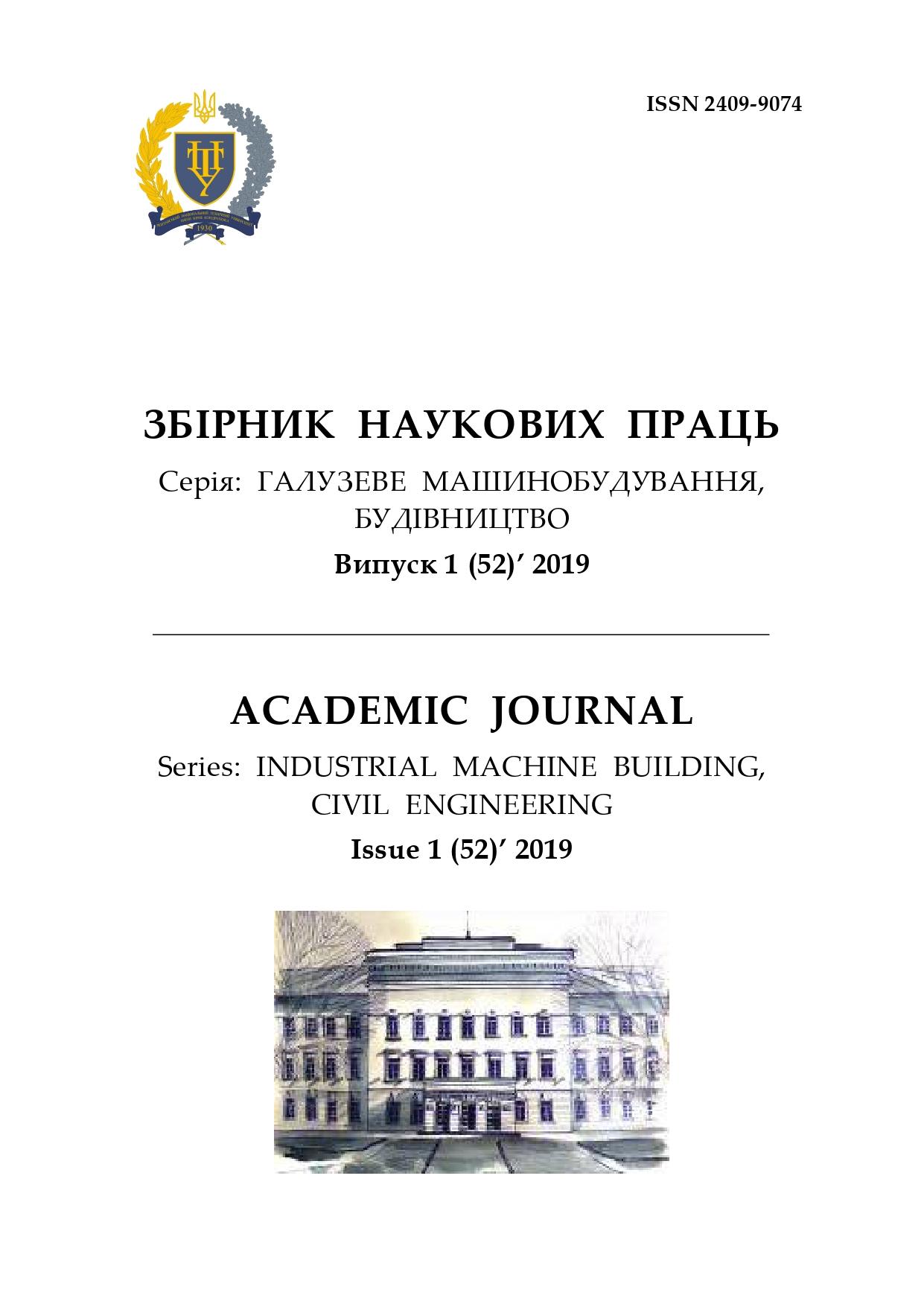Improvement of settlement calculations of building foundations by increasing the reliability of determining soil compressibility indices
DOI:
https://doi.org/10.26906/znp.2019.52.1684Keywords:
settlement, method of layer-by-layer summing up, reliability, soil compression test, soil porosity coefficient, soil deformation modulus, soil compressibility index, anisotropyAbstract
Ways to improve the methods of calculating the foundations bases’ settlements by increasing the reliability of determining
the soil compressibility indices are substantiated. The complex approach to refinement of the buildings bases' settlements calculation
by the layer summation method is investigated by accounting for the soil deformation modulus variability in the full
pressure range perceived by the base at loading; soil strength coefficient βZ; soil deformation anisotropy by elastic orthotropic
model; tendencies to magnitude variation in the soil deformation modulus in depth of the body under the foundations and
within the artificial bases built with the soil compaction. There was also proved the possibility of increasing the accuracy of
the predicting method for the buildings' foundations base settling using the soil compression index and accounting for the
pressure effect on the soil deformation parameters in depth of the compressible strata.
References
Dalmatov, B.Y. (2002). Geotechnical Basics. Moscow:
AVS.
Ilyichev, V.A. & Mangushev, R.A. (Ed.) (2014). Handbook
of geotechnics. Bases, foundations and underground
structures. Moscow: Publishing house ASV.
Kushner, S.G. (2008). Calculation of deformations of
the foundations of buildings and structures. Zaporozhe:
IPO Zaporozhe.
Hajiyev, M.A. (2019). Bussunesk problem for halfspace
heterogeneous in depth. Proc. of the Intern. Conf.
«Building Innovations – 2019», 39-50.
Lushnikov, V.V. (2017). Assessment of assumptions in
the regulatory documents for the calculation of foundation
settlements. Proc. of the Conf. «Engineering and geotechnical
surveys, design and construction of bases, foundations
and underground structures», 66-72.
Barvashov, V.A., Boldyirev, G.G. & Utkin, M.M.
(2016). Calculation of settlements and tilt of structures, taking
into account the uncertainty of the properties of soil
bases. Geotehnika, 1, 4-21.
Samorodov, A.V. (2017). Designing the effective combined
pile and plate foundations of multi-storey buildings.
Kharkiv: Madrid.
Antipov, V.V. & Ofrikhter V.G. (2019). Correlation between
wave analysis data and data of plate load tests in
various soils. Proc. of the Intern. Conf. «Geotechnics Fundamentals
and Applications in Construction: New Materials,
Structures, Technologies and Calculations». Taylor & Francis
Group, London.
Sotnikov, S.N. (1987). Construction and reconstruction
of foundations of buildings and structures on soft soils. (DSc
in Engineering). VNIIOSP, Moscow.
Vynnykov, Yu.L. (2010). Problems of determining the
deformation modulus of wetted loess soils. Academic journal.
Series: Industrial Machine Building, Civil Engineering,
(28), 62-68.
Zotsenko, N.L. & Vynnykov Yu.L. (2016). Long-Term
Settlement of Buildings Erected on Driven Cast-In-Situ Piles
in Loess Soil. Soil Mechanics and Foundation Engineering,
(3), 189-195.
https://doi.org/10.1007/s11204-016-9384-6
Briaud, J.-L. (2013). Geotechnical Engineering: Unsaturated
and Saturated Soils. Wiley.
Nuzhdin, L.V. & Pavlyuk, K.V. (2017). The effect of
deformational soil anisotropy on the SSS of the foundation’s
base. Proc. of the Conf. «Engineering and geotechnical surveys,
design and construction of foundations, foundations
and underground structures», 42-49.
Vynnykov, Yu.L. & Aniskin, A. (2019). Practical
problems of anistropic soil mechanics. Varazdin: University
North, Croatia.
Tugaenko, Yu.F. (2011). Transformation of the stressstrain
state of base soils and its consideration in the design
of foundations. Odessa: Astroprint.
Boiko, I.P. & Sakharov, V.O. (2004). Modeling of
nonlinear deformation of foundation soils taking into account
structural strength in conditions of addition. Building
structures: scientific-technical col., 61-1, 27-32.
Vynnykov, Yu.L. (2016). Mathematical modeling of
the interaction of foundations with compacted foundations
during their construction and the following work. Poltava:
PoltNTU.
Kryvosheiev, P., Farenyuk, G., Tytarenko, V.,
Boyko, I., Kornienko, M., Zotsenko, M., Vynnykov, Yu.,
Siedin, V., Shokarev, V. & Krysan, V. (2017). Innovative
projects in difficult soil conditions using artificial foundation
and base, arranged without soil excavation. Proc. of the 19th
Intern. Conf. on Soil Mechanics and Geotechnical Engineering
(COEX, Seoul, Korea), 3007-3010.
Zotsenko, M.L. & Vynnykov, Yu.L. (2019). Nonexcavated
foundations. Poltava: PoltNTU.
Dyiba, V.P., Skibin, E.G., Zamorov, A.A. & Verbitskaya,
E.Yu. (2017). The change in the coefficient of porosity
of the soil during loading. Proc. of the Conf.
«Deep foundation and geotechnical problems of the territories»,
-46.
Korniienko, M.V. & Poklonskyi, S.V. (2011). Features
of determining the modulus of claysoil deformation according
to compression tests. Building structures: scientifictechnical
col., 75. 374-382.
Vynnykov, Yu.L. Kostochka, N.A. & Miroshnychenko,
I.V. (2015). Determination of settlements of the
base of buildings by soil compression. Bridges and Tunnels:
Theory, Research, Practice: Coll. Sciences. works of Dnepropetrovsk
Nat. un-ty of railroad transport naked after
academician V. Lazaryan, 8, 4-13.
Utenov, E.S., Mukhamedzhanova, A.T. & Abildin,
S.K. (2019). Concerting the use of soil deformation
modulus in geotechnical design. Proc. of the Intern. Conf. on
Geotechnics Fundamentals and Applications in Construction
«Geotechnics Fundamentals and Applications in Construction:
New Materials, Structures, Technologies and Calculations».
Taylor & Francis Group, London.
Zotsenko, M., Vynnykov, Y. & Kharchenko, M.
(2011). Evaluation of Failure Probability of Soil Cushions.
Geotechnical Safety and Risk: Proc. of the 3rd Intern. Symposium
on Geotechnical Safety and Risk (ISGSR 2011). –
Germany: Munich.
Estimating settlements of footing in sands – a probabilistic
approach / F.C. Bungenstab, K.V. Bicalho, R.C.H.
Ribeiro, R.C.H. Aoki // Proc. of the 18th Intern. Conf. on
Soil Mechanics and Geotechnical Engineering. – Paris. –
– P. 3443 – 3446.
Pronozin, Ya.A. (2017). Experimental and theoretical
justification of the updated method of layer-by-layer summation
to determine the settlement of shallow foundations. Collection
of papers Scientific and Technical Conf. «Engineering
and geotechnical surveys, design and construction of
bases, foundations and underground structures».
Downloads
Published
How to Cite
Issue
Section
Published 2019-07-05




